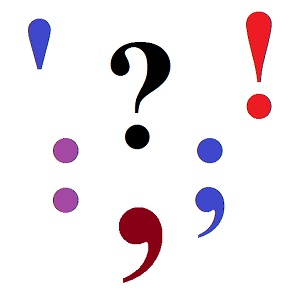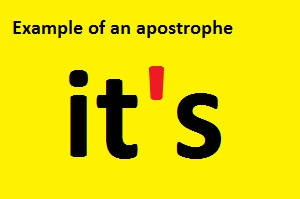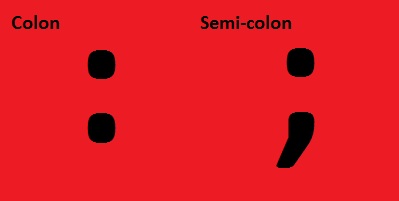Other Punctuation
Lesser known English Grammar Rules
Apart from the full stop and comma there are a few other English grammar rules and punctuation marks you should learn. There are not many of them and it won't take you long. Once you get into the habit of using them it will show to people who read your work that you have a good understanding of punctuation and English grammar.

How to use an apostrophe:
The apostrophe looks like a comma but it is placed at the top of a word not the bottom.

For example: This is John’s house.
There are a number of English grammar rules that apply to the apostrophe. However many people are not aware of all of them.
Use of the apostrophe number 1 possessive:
When something belongs to someone such as john’s car or Amy’s piano these are their possessions. To show that you are talking about a person’s possession you need to put an apostrophe before the ‘s.
For example:
- John's car
- Sarah’s new shoes
- The person’s possession
- The baker’s shop
Use of the apostrophe number 2 possessive and plural:
If however you are writing about something that is possessive and plural the apostrophe goes after the s’.
For example:
The bakers’ shop
This now means that two or more bakers (plural) own a shop together (possessive).
Using an apostrophe when joining words:
With some words you can use the apostrophe to show that one or two letters have been removed.
For example:
Do not
You can push these two words together and use an apostrophe to show that you have removed the ‘o’ from ‘not’. This creates the word:
Don't
Other pairs of words that can be joined together:
- She will, becomes she’ll
- Does not, becomes doesn’t
- Should not, becomes shouldn’t
- It is, becomes it’s
Etc.
However the last one from the previous example can be a little bit tricky:
As stated it’s, is short for it is. You don't want to confuse this with:
its
Without the apostrophe
This is used when something belongs to a thing (possession).
For example:
The castle is famous for its tall towers.
How to use the colon and semi-colon:
It's easy to use these two little punctuation marks to help make your writing more refined.

The colon:
The easiest way to use a colon in a sentence is to replace the word because.
For example:
'Katie went to the shops to buy some apples because she wants to have a healthier lifestyle'.
This can be changed to:
'Katie went to the shops to buy some apples: she wants to have a healthier lifestyle'.
The semi-colon:
When you have two sentences that are very closely related to each other you can use the semi-colon to join them together.
For example:
'The night was cold and unpleasant. It did not get much warmer when the sun came up'.
You can use the semi-colon to show that these two thoughts are linked together.
'The night was cold and unpleasant; it did not get much warmer when the sun came up'.
It's fine to use either the full stop or the semi-colon between these two thoughts. By using the semi-colon you are showing that the two sentences are closely related.
Conclusion:
Knowing where full
stops go is more important than the
English grammar rules above. Nevertheless learning and applying them will improve the
quality of your written work. This will help you impress teachers and
employers.
Return from Lesser Known English Grammar Rules to Home Page.




